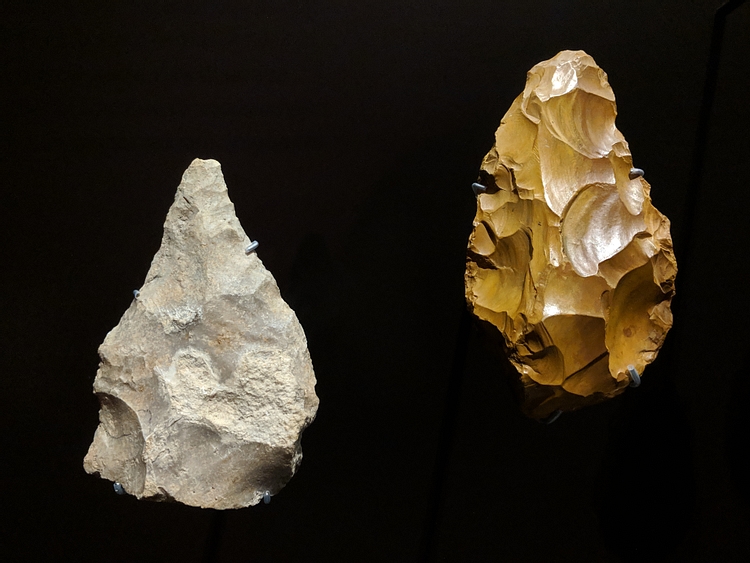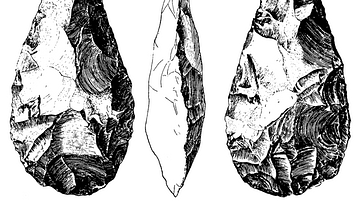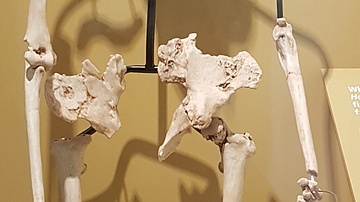Server Costs Fundraiser 2024
Illustration
These two handaxes were made from flint by Homo erectus around 130,000 BCE. They were both found in Switzerland: The ochre one was found in Pratteln, Canton Basel-Land, while the white one was found in Schlieren, Canton Zurich.
On display at the Swiss National Museum, Zurich, Switzerland.
About the Author
Photo Location
This photograph was taken at the following location:
References
- Swiss National Museum, accessed 19 Mar 2020.
Cite This Work
APA Style
Crabben, J. v. d. (2018, December 17). Early Prehistoric Handaxes. World History Encyclopedia. Retrieved from https://www.worldhistory.org/image/9717/early-prehistoric-handaxes/
Chicago Style
Crabben, Jan van der. "Early Prehistoric Handaxes." World History Encyclopedia. Last modified December 17, 2018. https://www.worldhistory.org/image/9717/early-prehistoric-handaxes/.
MLA Style
Crabben, Jan van der. "Early Prehistoric Handaxes." World History Encyclopedia. World History Encyclopedia, 17 Dec 2018. Web. 26 Jul 2024.








